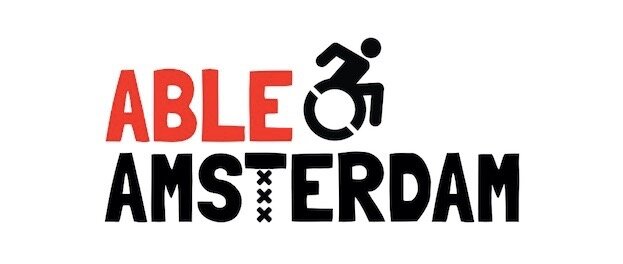Mobility aids in the spotlight: A review of the Alinker
This page contains affiliate links.
In July 2019 I went to my occupational therapist to discuss a personal dilemma. My question was: How can I stay active, independent and cover longer distances without putting too much strain on my shattered femur?
I was two years and a whole collection of mobility aids into my accident recovery. I used my Rollz Motion to practice walking outside. My crutches provided support indoors. For longer distances, my friends or family pushed me in a wheelchair. Still, I felt something was missing.
I’d considered getting a mobility scooter or electric wheelchair but felt like my leg would miss out on exercise. I’d tried a three-wheeled bicycle but didn’t have the muscle power to pedal up a slope.“There must be another mobility aid to stay active and independent,” I said to my occupational therapist, “Can you think of anything?”‘
“What about a walking bike?” she asked, “It’s like a bicycle, but without pedals. You move it forwards by walking.” It reminded me of the cars in The Flintstones. “The perk of a walking bike,” she continued, “is that it allows you to exercise without having to put all your weight on your leg.”
A quick Google search revealed a variety of options. Amongst them was the Alinker, an eye-catching yellow bike. With three wheels, it offered more stability compared to the two-wheeled bikes. Perfect for someone like me with a bit of a balance problem (due to my weaker right leg).
A few weeks later I tested out an Alinker at Vierfiets, the Dutch distributor. To my relief, my test ride in- and around the shop was a huge success. I bought an Alinker soon after. Today I’ll be sharing an honest review of my Alinker based on several months’ use around Amsterdam.
The Alinker: A revolutionary walking bike
The Alinker is a unique mobility aid that emphasises ability rather than disability. Created by Dutch designer Barbara Alink, the Alinker made its debut in The Netherlands in 2014. Several successful crowdfunding campaigns have since brought the Alinker to North America and beyond.
According to its official website, the Alinker is “for people who identify with being an active person… but happen to have an illness or condition that impacts their mobility.” Customers include people with Multiple Sclerosis, Parkinson’s, arthritis, leg amputations, stroke survivors, and many more conditions. The goal of the Alinker is to”make it as easy and fun as possible for people to stay physically active, socially connected and emotionally engaged in the community“.
The Alinker is currently available in bright yellow. It is non-motorised and without pedals. The Alinker comes in frame sizes S, M, and L. I am 1.62 m (5 ft 4) and use a size S. Visit the Alinker website for a size overview.
The front wheels come off easily
The frame is collapsible
Advantages of the Alinker
1. The strong frame and high-quality design.
The Alinker frame feels incredibly strong and stable.
Other things I particularly like:
The comfortable foam handlebars can be adjusted at an angle.
The saddle can be easily adjusted in height.
The brake is strong. This makes me feel much safer when going up or down a slope. There is also a parking brake.
The two front wheels can be easily removed from the frame (if needed to fit through narrower spaces). The saddle is also removable.
The frame is collapsible. This makes it more compact when storing it away and getting into smaller spaces.
The saddle height can be easily adjusted.
The angle of the handlebars can be adjusted.
The handlebars are made of foam.
The saddle height can be easily adjusted.
Add your own bike accessories!
The wheels can be pumped up with a standard bicycle pump.
2. It allows you to stay seated at eye-level.
Using a wheelchair I learned that sitting at eye-level (or not) can impact how people treat me and how included I feel in social situations. I’ve been spoken to in a childish tone, even blatantly ignored compared to my standing friends. At times I’ve felt excluded from conversations because everyone around me was speaking at a different height. Sitting on the Alinker at eye-level eliminates these struggles and makes me feel more socially included.
3. It has three wheels rather than two.
This gives the Alinker a lot more stability than a two-wheeled walking bike. Because it has three wheels:
It is easier to keep your balance.
You don’t have to constantly put weight on your legs to keep the bike upright when you’re standing still.
The diagonal bar across the bottom front of the Alinker can also act as a foot rest. This means you can potentially alternate which leg you use to push off.
4. It’s a cool looking bike that attracts a lot of positive interest.
The Alinker isn’t just well made, it also looks really cool. I’ve lost count of how many times passerby’s have stopped me with “Wow, what a cool bike!”, “What kind of bike is that?” or “How does it work?” It’s been amazing to see the genuine interest and positivity from strangers rather than questions or comments about “what happened to me”.
5. A range of standard bicycle accessories can also be used on the Alinker.
You can deck out your Alinker with standard bicycle cupholders, baskets, reflectors, lights, seat covers, and more!
My Alinker's maiden voyage in Amsterdam
Disadvantages of the Alinker
1. Although it folds up, it’s quite bulky.
The Alinker can be collapsed and partially disassembled. However, it isn’t a compact mobility aid. This makes it challenging to transport in eg. the trunk of smaller cars. The size of the Alinker frame also means I struggle to manoeuvre in narrower shop aisles, packed restaurants, or tight spaces.
2. If I use it for too long the seat can get uncomfortable.
Let’s just say my crotch area can feel quite painful the day after I’ve used my Alinker for several hours. For added comfort I suggest getting a gel bicycle seat cover. Other users recommend padded biking shorts.
Shopping in Amsterdam with my Alinker
How the Alinker has impacted my life
Before getting my Alinker, I was lucky if my bad leg could manage a few hundred metres walk down to the supermarket. When I took my Alinker on it’s maiden voyage to the local park I ‘walked’ 3.5 km (!). I was absolutely astonished that I’d covered that much ground. And I still had energy left.
I’ve also been able to go fast again — like Ricky Bobby in Talladega Nights. By pushing off with my good leg I can pick up some speed. For the first time in years my friends and family have told me to slow down. I love it.
My Alinker has also been great for building up muscle strength. By putting my good leg on the frame, I can give my weaker leg a much-needed work out.
I get stared at a lot. But not in a pitying ‘poor young girl using a mobility aid’ kind of way. Instead, it’s a ‘what a cool looking bike’ stare.
I love the social interaction my Alinker inspires. Every time I go for a ride, people stop me on the street. Some are just curious. Others are excited to learn more about a product that will help their mobility too.
Overall, my Alinker has given me back a sense of freedom, empowerment, and social engagement. Mission accomplished, I’d say.
Additional links and resources
I recommend the Alinker to anyone who would like to get an additional mobility aid to maintain an active lifestyle. While it’s an expensive product (1,950 Euros) I feel the price is parallel to the quality.
If you think the Alinker could improve your mobility, or that of somebody close to you, check out the Alinker website or follow @the_alinker_world on Instagram.
There are many Alinker distributors worldwide. Find out if there is an Alinker distributor near you.
Final tips
Remember that people’s experiences with mobility aids can vary. I strongly encourage you to give an Alinker a test drive to find out if it suits your personal needs and abilities.
If you’re looking for a reduced rate, browse through your country’s second-hand online platforms. I bought my Alinker from a previous user on the Dutch Marktplaats.
If you’re in North America, check out the Alinker rent-to-own scheme and online crowdfunding opportunities.
Have a read through other Alinker users’ testimonials.
For all your burning questions, head over to the Alinker FAQ page or ask me in the comments below!
At the National Maritime Museum in Amsterdam with my Alinker.














